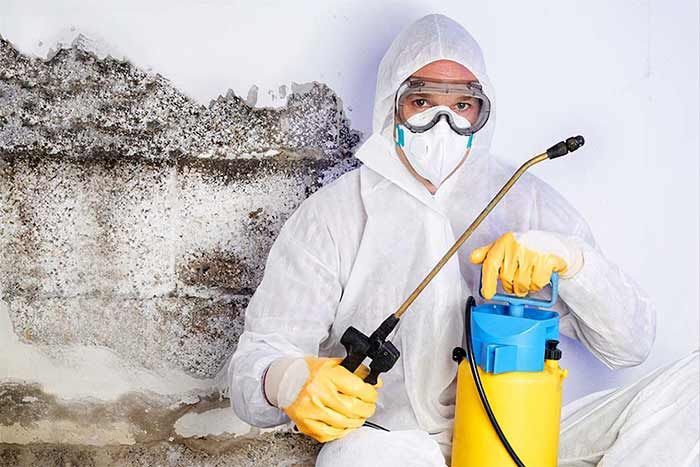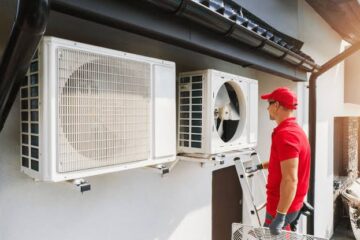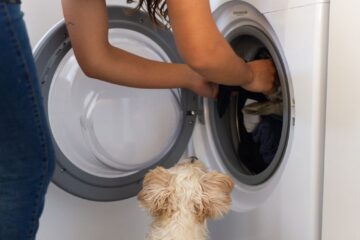Black mold, scientifically known as Stachybotrys chartarum, poses significant health risks and structural concerns when present in homes or buildings. Conducting a thorough black mold inspection is crucial for identifying its hidden presence, assessing potential risks, and implementing effective remediation strategies. This article delves into the importance of black mold inspections, methods used in inspections, key considerations, interpreting findings, and steps for remediation if black mold is discovered.
Understanding Black Mold
Characteristics and Health Risks
Black mold thrives in damp, humid environments and typically appears as dark greenish-black patches. It releases mycotoxins that can lead to various health issues, particularly affecting individuals with allergies, asthma, or compromised immune systems. Exposure to black mold spores can cause respiratory problems, allergic reactions, headaches, fatigue, and in severe cases, more serious health conditions.
Common Sources of Black Mold
Black mold commonly grows on cellulose-rich materials like wood, drywall, carpeting, and insulation. Areas prone to water damage, leaks, flooding, or high humidity levels—such as basements, bathrooms, and areas affected by roof leaks—are particularly susceptible to black mold growth.
Importance of Black Mold Inspection
Early Detection and Prevention
Conducting regular black mold inspections helps in early detection before mold spreads extensively. Early identification enables prompt remediation measures, preventing potential health risks and structural damage associated with prolonged exposure to black mold.
Health and Safety
Inspections are essential for safeguarding the health and safety of occupants. Professional inspections provide accurate assessments of mold presence, mycotoxin levels, and associated health risks, guiding appropriate measures to improve indoor air quality and mitigate health hazards.
Methods Used in Black Mold Inspection
Visual Inspection
A visual inspection is the initial step in identifying potential black mold problems. Homeowners and inspectors visually assess areas for visible signs of mold growth, such as dark patches on surfaces, musty odors, or discoloration. While visual inspection provides initial indications, professional inspection using specialized equipment ensures accurate assessment and confirmation of black mold presence.
Moisture Detection
Inspectors use moisture meters and thermal imaging cameras to detect hidden moisture sources that promote black mold growth. Identifying areas with elevated moisture levels, leaks, or condensation helps pinpoint potential mold hotspots that require further inspection and remediation.
Air Sampling
Air sampling measures airborne mold spore concentrations, including those from black mold species. Inspectors collect air samples using air pumps or passive sampling devices from different rooms and send them to accredited laboratories for analysis. Air sampling provides quantitative data on mold spore levels, identifying indoor air quality issues and assessing the presence of black mold spores.
Key Considerations in Black Mold Inspection
Certification and Expertise
Choose certified mold inspection professionals with expertise in black mold detection and remediation. Look for certifications from reputable organizations like the American Council for Accredited Certification (ACAC) or the Indoor Air Quality Association (IAQA). Certified inspectors adhere to industry standards, ensuring thorough inspections, accurate assessments, and effective remediation strategies.
Comprehensive Inspection
Ensure inspectors conduct comprehensive inspections, including visual assessments, moisture detection, and air sampling, to identify hidden mold growth and assess the extent of contamination. Comprehensive inspections provide detailed insights into mold presence, species identification, and severity, guiding tailored remediation strategies.
Interpreting Findings from Black Mold Inspection
Understanding Inspection Reports
Inspection reports detail findings, including mold species identified, spore levels, moisture sources, and recommended actions for remediation. Understanding inspection reports requires interpreting mold species significance, elevated spore counts, and health implications associated with black mold exposure.
Health Risks and Mycotoxin Presence
Black mold inspection near me may identify mycotoxins released by Stachybotrys chartarum, exacerbating health risks for occupants. High mycotoxin levels indicate potential health hazards, necessitating prompt remediation measures to reduce exposure risks and improve indoor air quality.
Steps for Remediation if Black Mold is Discovered
Professional Remediation Services
Enlist certified mold remediation professionals to safely remove black mold and prevent its recurrence. Remediation companies use specialized equipment, containment measures, and EPA-approved cleaning solutions to effectively eliminate black mold and restore indoor environments.
Moisture Management
Address underlying moisture issues contributing to black mold growth, such as leaks, humidity levels, or poor ventilation. Implement preventive measures, such as repairing leaks, improving ventilation systems, and using dehumidifiers in damp areas to maintain dry indoor conditions and prevent mold recurrence.
Conclusion
Black mold inspections are essential for identifying, assessing, and mitigating mold infestations in homes and buildings. Conducting thorough inspections enables early detection, accurate assessment of mold presence, and implementation of effective remediation strategies. By understanding the importance of black mold inspections, methods used in inspections, key considerations, interpreting findings, and steps for remediation, homeowners can effectively manage black mold issues, protect occupants’ health, and preserve property integrity. Investing in professional mold inspection and remediation services promotes peace of mind, ensures compliance with health and safety standards, and enhances overall well-being in residential and commercial environments. Regular inspections and proactive maintenance help prevent black mold growth, ensuring a safe and healthy indoor environment for all occupants.
Keep an eye for more news & updates on TribuneTribune.com!




